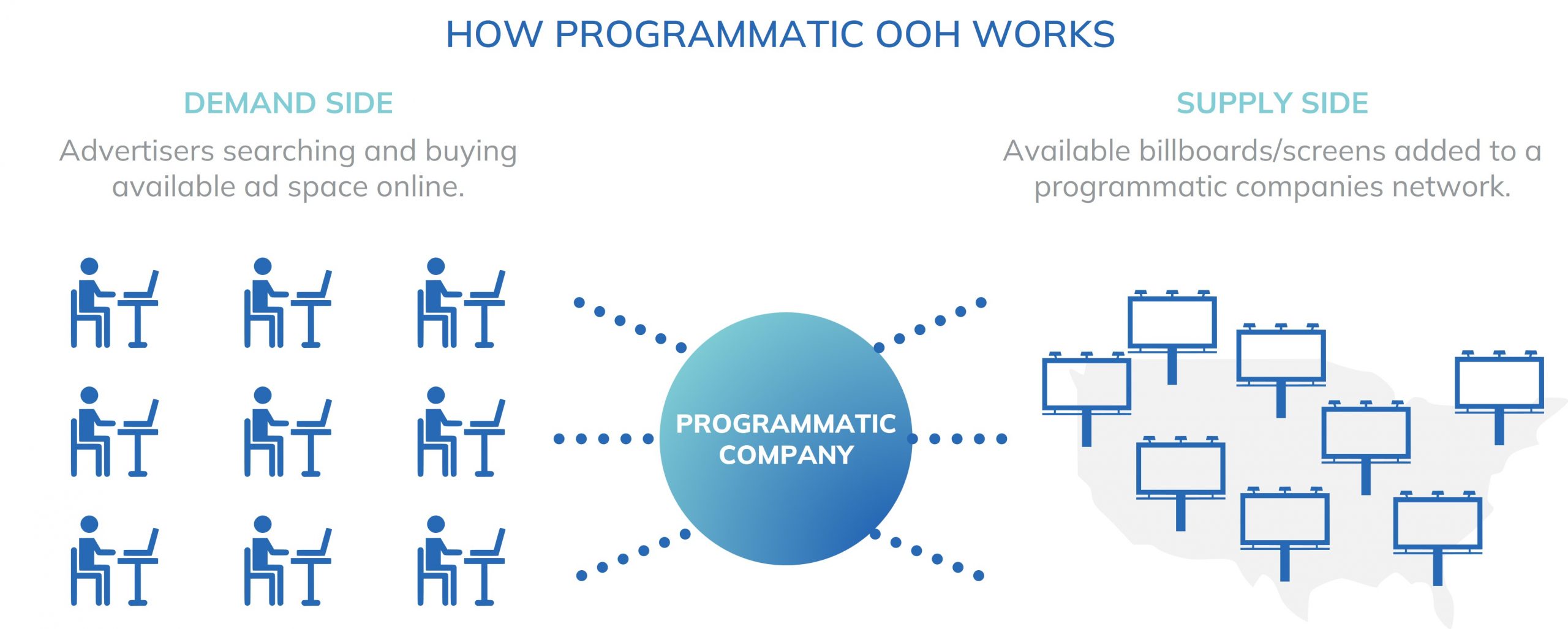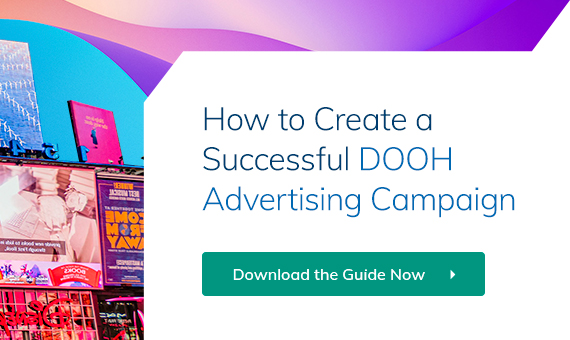While programmatic advertising for online ads has been on an upwards trajectory for more than a decade already, it is only relatively recently that the digital out of home (DOOH) industry has started exploring the opportunities and potential of programmatic technology.
Today, however, DOOH media owners and DOOH publishers are increasingly looking to gain access to the programmatic DOOH (pDOOH) ecosystem via a DOOH SSP – or DOOH supply side platform.
Read more: What Is Programmatic Digital Out of Home Advertising?
For media owners, a DOOH SSP is the gateway to reaching the ever-growing pool of DOOH media buyers – be they agencies or brands.
However, as the DOOH market continues to grow, so too does the list of potential supply side platform providers DOOH media owners have to choose from.

(Image source: vistarmedia.com)
So, how do you choose the right DOOH SSP for your DOOH inventory – and what questions should you be asking when assessing your options?
What Is a DOOH Supply Side Platform?
In a programmatic marketplace, ad space on DOOH inventory is bought and sold via two separate platforms that link media buyers with media owners. Buyers log into demand side platforms (DSPs), and sellers log into supply side platforms (SSPs).
DSPs and SSPs are two separate tools that exist at opposite ends of the ad buying and selling process.
A DSP allows buyers to find, access and buy space on DOOH inventory based on pre-selected criteria, such as location, time and target audience. For each campaign, the buyer sets a budget for what they are willing to pay for the desired inventory and the platform does the rest automatically.
On the other side of the marketplace, sellers utilize a supply side platform to control which of their inventory they want to make available to buyers, when they want to make it available, and how much they want to charge for it.

(Image source: tastyad.com)
Since everything takes place online, supply side platforms eliminate the need for media owners to engage potential buyers directly about where, when, and how their ad should be displayed. Instead, all relevant data and availability is fed into the SSP. In this way, when a media owner has inventory available that matches a buyer’s preferences on the DSP end, the respective platforms helps both parties find each other and do the deal.
Read more: Sell Side Vs Demand Side Platforms: What’s the Difference?
What to Look for When Choosing a DOOH SSP
In the first instance, the supply side platform you choose should be intuitive to use and easy to navigate. The whole purpose of utilizing an SSP is to save you time and to help you sell your inventory quicker for the best return possible. As such, a well-designed, intuitive platform is a must.
In terms of functionality and services that will help you maximize your investment, the following are the main things to look for.
Different Types of Programmatic Transactions
Most supply side platforms will support three main programmatic transaction types. These are:
- Programmatic Guaranteed: This is where the media owner makes a defined set of inventories available to a buyer who agrees to buy a certain number of impressions for a guaranteed price. In this way, both the buyer and seller bring a guarantee to the table.
- Exchange, or Open Real-time Bidding: This is an open online auction where multiple media buyers can bid on the seller’s inventory. The system then automatically assigns the slot to the buyer with the best bid and delivers the ad as specified.
- Private Deal Real-time Bidding: This scenario is similar to open real-time bidding, the difference being that the seller has pre-selected an exclusive set of premium buyers, rather than leaving the auction open to anyone and everyone. Private real-time bidding is used when media owners want to offer priority access to certain buyers which they either want to attract or with whom they have already established a good working relationship. This method is also useful for publishers to limit their inventory access for heavily regulatedor controversial advertisers.
Inventory Control
The ideal SSP should never force you to relinquish control of your inventory. You need to protect your business and a supply side platform should ensure you can do just that. Here are a few things to look for in this regard:
- Floor Pricing: A good SSP will let you set cost per mille (CPM – i.e., the cost per 1,000 impressions) floors, which determine the minimum price you want to set for your inventory. You should be able to set floors on individual screens as well as across your whole DOOH network.
- Creative Approval: You should look for an SSP that gives you, as the media owner, final approval of any ad that runs on your screen. The platform should automate the review and approval process, rather than you having to do it separately via email.
- Restrictions: To ensure you maintain control, you need an SSP that allows you to set category and advertiser restrictions, in the event you want to prevent certain advertisers or categories displaying ads on your screens.
Round the Clock Support
As ever, the best businesses to work with are those that offer the best support. As such, look for an SSP that has a team dedicated to helping media owners with everything from buyer introductions, training and account management.
Reporting
Media owners need to know how their screens are performing at a granular level. Look for a supply side platform that offers a fantastic suite of analytics and reporting tools.
Talk to Us Here at The Neuron
Supply side platforms are the perfect tool for DOOH media owners that want to start trading programmatically.
If you’re looking for more advice on selecting the perfect SSP, get in touch with the DOOH experts here at The Neuron today.


